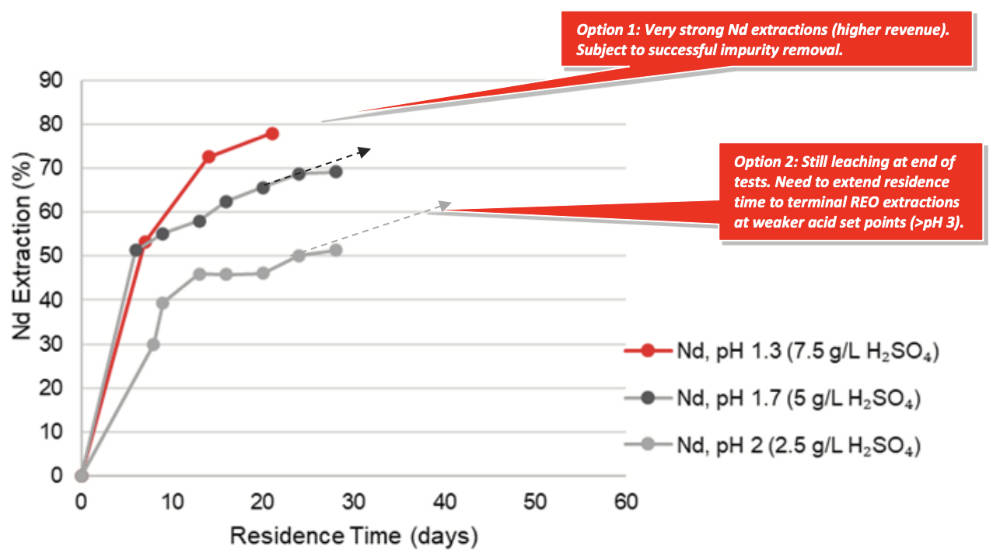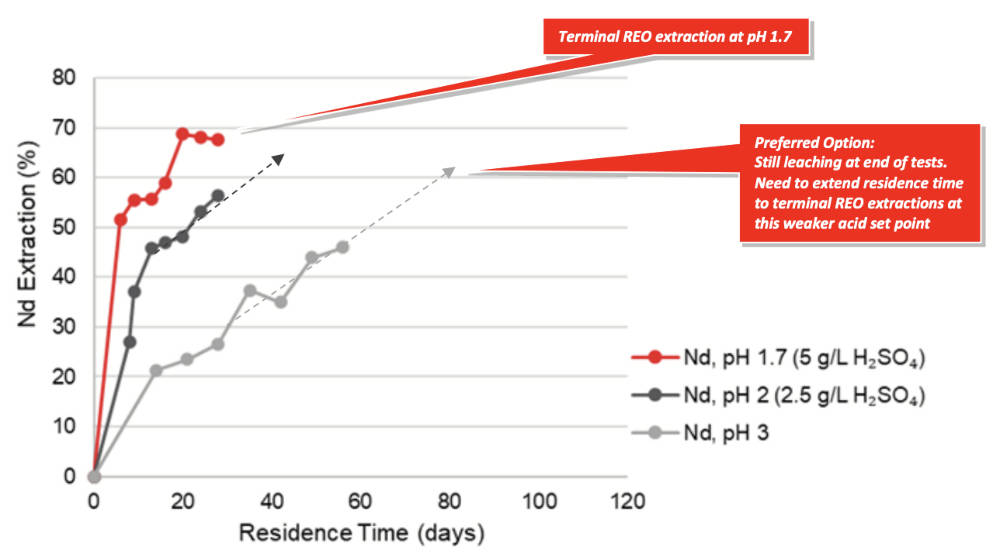Testing adds confidence to heap leach option for Red Metal’s rare earths discovery

On target: RDM’s Phase 2 test work has demonstrated that heap leaching is a viable option for processing ore from the Sybella REO project. Pic: Getty Images
- Phase 2 metallurgical test work adds confidence to low-cost, low-capital heap leach processing at Sybella
- Interim results show strong REO recoveries on coarser heap leach crush sizes
- Optimisation work reduces acid consumption rates
- It also found that lowering acid strength and increasing leach time reduces contaminants and consumption rate
Special Report: Interim results from Phase 2 metallurgical testing have added certainty that a low-cost, low-capital heap leach processing option is feasible for Red Metal’s Sybella rare earth oxide discovery in northwest Queensland.
Sybella is a unique, partially weathered and fresh REO-enriched granite that’s more than 12km long and 3km wide, offering Red Metal (ASX:RDM) the potential to uncover vast tonnages with high concentrations of valuable magnet rare earths such as neodymium, praseodymium, dysprosium and terbium.
Initial drilling has outlined large widths of granite-hosted REO mineralisation with wide zones of >300 ppm NdPr oxide starting at surface.
This also identified the Boundary Fence East, Boundary Fence West and Donkey Dam areas of interest.
Notably, Phase 1 metallurgical testing found that the REO content could be extracted using sulphuric acid at ambient temperature.
This finding was backed by industry specialists ANSTO Minerals whose ambient heap leach test work proved that coarse, non-pulverised reverse circulation chips could deliver strong REO extractions while consuming low levels of sulphuric acid.
Heap leach option gains viability
RDM’s Phase 2 metallurgical testing has now delivered interim leach and comminution results confirming that strong REO extractions can be achieved using low levels of ambient temperature sulphuric acid on coarse fractions of both weathered and fresh granite over increased residence times.
This achieved average extractions of 83% neodymium, 84% praseodymium, 51% dysprosium and 58% terbium from coarse chips of weathered granite.

Adding interest, the test work shows that coarser heap leach crush sizes can provide high REO recoveries with less liberation of contaminants and acid consumption. This has the potential to deliver high revenue with lower processing costs.
Optimisation work has enabled the reduction of acid consumption rates compared to Phase 1 levels. It also found that lowering the acid strength and increasing the residence time reduced iron and aluminium contaminants as well as the acid consumption rate.
To top it off, a breakthrough pH 3 leach result achieved on fresh granite run over 56 days has opened up vast tonnage potential below the weathered zone to possible REO extraction.
Testing on the fresh granite yielded average extractions of 42% neodymium, 42% praseodymium, 20% dysprosium and 26% terbium with leaching still continuing at the end of the test.
Running the pH 3 test over a longer residence time not only increases REO extraction but also reduces the acid strength to the point where the extraction of deletrious iron and aluminium is effectively turned off, lowering processing costs for fresh granite.

Meanwhile, comminution test work show the coarsely crushed granite is classified as “very soft” when weathered and “soft” when fresh which should translate into very competitive capital and operating costs for both mining and crushing.
Additionally, this clay-poor rock is ideal for stacking and should offer scope for tall, cost-efficient heaps.
“Interim results from the second phase of leach test work and comminution studies have confirmed Red Metal’s initial hypothesis that the Sybella granite-hosted REO mineralisation can be coarsely crushed and leached under weak acid conditions in a manner suitable for low-cost, low-capital heap leach processing,” managing director Rob Rutherford said.
“Impurity removal trials are progressing with early indications showing residual contaminants from the pregnant leach solution may be successfully removed, potentially resulting in a premium mix rare earth carbonate (MREC) product. Results from these tests are expected shortly.
“The company has reasonable expectation that our ongoing studies will confirm a process route that optimises REO recovery (increases revenue) but reduces the acid consumption rate and ensures that impurities in the final product can be satisfactorily minimised (lowering processing costs). It is also now working rapidly towards outlining ore resources.”
Next steps
Preparations for follow-on column leach test work using very weak acid (pH 2 to pH 3.5), over extended residence times (about 120 days) are underway.
Impurity removal trials and mixed rare earth carbonate precipitation test work on the pregnant leach solutions obtained from the Phase 2 tests are ongoing with results anticipated within the next month.
Additionally, broad-spaced step-out drilling is continuing apace and is now about 50% complete.
This article was developed in collaboration with Red Metal, a Stockhead advertiser at the time of publishing.
This article does not constitute financial product advice. You should consider obtaining independent advice before making any financial decisions.
Related Topics

UNLOCK INSIGHTS
Discover the untold stories of emerging ASX stocks.
Daily news and expert analysis, it's free to subscribe.
By proceeding, you confirm you understand that we handle personal information in accordance with our Privacy Policy.








